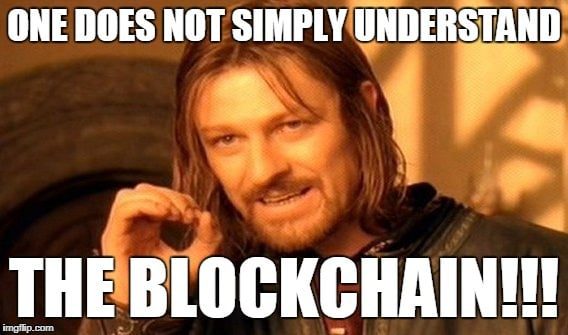The world isn’t what it was five years ago. As sick as everyone is of hearing the term “new normal,” it’s clear that our work lives have been changed forever by the pandemic. 98% of employees want to work from home at least some of the time, while almost 30% currently do. It’s a growing trend that doesn’t seem to be going away anytime soon. And to be honest, who can blame them?
But when it comes to selling remotely, you’re going to need to use cutting edge technology to stay ahead of the competition. Remote sales team tools are a dime a dozen nowadays, but there are some out there that are worthy of the hype. While the the crème de la crème are utilizing state-of-the-art AI already, there are plenty of technological advancements in the pipeline that will be picked up as soon as they’re ready for mass adoption. Think in terms of blockchain, augmented reality, and quantum computing…
Don’t let that scare you, though! There’s a lot to learn about remote sales team tools, but the best are always intuitive. You pick them up and feel like you’ve used them before. They’re built by pros and their user interface is sleek. They’re literally made for you – the user.
If you’re feeling intimidated by the technological shifts in the sales industry, these are the tools that you can use to really take your sales game to the next level. And pro secret: some of them are so good that you can actually use your sales team for user research as well. This way, you can all be on the same page about which (possibly non-existent) features your sales team are actually selling.
@tldv.io Oh sales ❤️ #productmanagement #sales #tech #corporate #startup #aitools #meetingrecorder
♬ original sound - tldv.io - AI Meeting Recorder
10 Remote Sales Team Tools That Are Worth the Hype
1. tl;dv
The top way to level up your sales game is to record your sales calls. This has heaps of benefits, including the ability to use the calls for sales training. You can really knuckle down into self-learning and improve your entire process through self-analysis.
But you can use tl;dv for more than just training. It integrates with GPT technology to offer AI sales call summaries. Wave goodbye to manual notes that take you out of the conversation. With tl;dv, you can get automatic notes, but also sales call summaries at the end of each call. There’s nothing better than a summary of all the key points discussed, including the prospect’s opinions and objections, with highly accurate speaker recognition.
When it comes to the sales follow-up, tl;dv gives you tons of options to upgrade your game and absolutely ace it. Not only can you rewatch the highlights of previous calls, skipping to the most important parts with ease (and the help of AI). You can also scan the transcripts for certain keywords to remember what your prospect said and enter the follow-up with confidence. It gives you the opportunity to personalize your follow-up and maintain a sense of connection even if a few weeks have passed.
In addition to all the obvious benefits that call recordings have, you can also use them as a user research tool. Salespeople are often the first to hear about what customers want. They speak to them regularly and they understand the market. They may have even made deals on the condition of features that don’t yet exist for your product! With the help of AI, you can quickly search the transcripts of all your sales calls to find out which potential features have been discussed by multiple different clients. And just like that, you have continuous inspiration for new features that your customers are guaranteed to love.
@tldv.io Like Undercover Boss but it’s CS trying to frame Sales #productmanagement #sales #customersuccess #hr #corporatehumor #tech #startup #aitools
♬ original sound - tldv.io - AI Meeting Recorder
2. Salesforce
Salesforce is a powerful Customer Relationship Management (CRM) platform that’s designed to help you level up your sales team. It empowers remote sales teams to centralize and easily manage large swathes of customer data, including contact information, purchase history, and communication history. Having access to a single source of truth that’s continually kept up to date can be a life-saver for sales reps. They can use that information to curate a highly personalized pitch.
In addition to data management, Salesforce has several other large benefits. Leads can be tracked throughout the entire sales funnel, from initial contact to closing the deal. This type of visibility allows sales reps to prioritize high-potential prospects.
It can also automate tasks such as lead assignment, email follow-ups, and data entry to save you time. Additionally, it integrates seamlessly with a wide variety of third-party tools, including tl;dv, so your data from recorded video calls can go straight into your database.
Salesforce is a huge platform with tons of features, so it would be impossible to list them all here. Having said that, you can also expect AI-powered insights, top quality analytics and reports, as well as great collaboration methods for remote teams.

3. Clearbit
Using the most recent details of prospects such as job titles, company information, contact information, and social media profiles, Clearbit automatically enriches your lead data so you can better understand who you are selling to. This allows sales reps to personalize their outreach, increasing their chances of making a sale.
Similarly, Clearbit helps sales teams prioritize leads based on various criteria, such as company size, industry, and engagement history. This allows you to focus on the prospects with the most potential.
Like in Salesforce, Clearbit keeps your customer data up to date, and can help you personalize and automate emails. It can also scout out your lead’s company, allowing you to find out which tools and technologies they’re already using, and where there is a convenient place for your product or service to slot into.
In the end, Clearbit helps you from ending up like these guys…

4. Highspot
Highspot is a great sales enablement platform for remote teams. Using state-of-the-art AI technology, Highspot can recommend the most relevant content for each sales situation. This ensures that remote sales reps can quickly find and share the right content with prospects, leading to more effective sales conversations.
Another great feature of Highspot is the ability to create a sales playbook. This can guide sales reps through the entire sales process, start to finish. It includes things like best practices, objection-handling tips, and competitive positioning. Overall, it boosts sales team performance.
There are plenty of other features that you can use to level up your remote sales team, too. There’s a pitch coaching feature, as well as training materials, quizzes, and assessments for sales training and onboarding. It also integrates with your CRM of choice and has a number of remote collaboration features, making it a great sales toolkit for remote sales teams.
5. HubSpot Sales Hub
HubSpot Sales Hub is a powerful and easy-to-use sales software that drives productivity, enables customer connection, and supports growing sales orgs. As it’s built by the same team as HubSpot, it integrates seamlessly with their native CRM, providing a unified platform for managing leads, contacts, and customer information.
Like the aforementioned remote sales team tools, HubSpot Sales Hub features sales playbooks, email personalization and automation, meeting scheduling, and a number of lead management features that help sales reps personalize their sales strategies and close more deals.
As a leader in the field, the real question between this and some of the other tools on this list is which one feels more comfortable for you to use.

6. SalesLoft
Dubbed as the first AI-powered revenue workflow platform, SalesLoft is specifically catered towards optimizing and automating outreach efforts so you can secure more leads. It reduces the risk of missed opportunities by keeping leads and prospects consistently engaged. It does this in a number of ways, including: automatic email sequences, phone call cadences, and social media interactions.
While it offers many of the same features of the other tools on this list, it really comes into its own in the way it utilizes AI. It can personalize at scale, empowering sales teams to craft customized messages and content that resonates with individual prospects.
It tracks phone calls too, but lacks the sophisticated and specialized features of tl;dv.
7. Calendly
Calendly is an online scheduling tool that turbocharges the efficiency of sales teams by saving them time. It simplifies the meeting scheduling process, enabling remote sales reps to share their availability. Prospects or clients can then choose a suitable time slot from the available options, completely eradicating the need to hop back-and-forth with emails and phone calls to try and arrange a meeting.
Calendly also gives you plenty of options for customizable meeting types. From initial consultations to product demos, follow-up calls, and more. Each meeting type can have its own duration and set of questions to collect relevant information in advance.
One of the other great things about Calendly is that it handles the time zone issues for you. It automatically detects the local time of all participants. If you’re working in an asynchronous remote sales team, Calendly is a godsend.

8. Pipedrive
Pipedrive is another CRM platform that helps sales teams do their job more efficiently. However, Pipedrive has a slightly different approach. A visual one. Essentially, it provides a visual representation of the sales pipeline, allowing remote sales teams to see the status of deals at a glance. This can be immensely helpful in terms of prioritization.
Other features include common but essential staples in sales, such as email integration and automation, sales analytics and reports, and a variety of remote collaboration features. As a CRM platform, it also integrates with hundreds of third-party apps, including tl;dv.
What makes Pipedrive particularly good is that it’s designed for salespeople, by salespeople. You can bet that they’ve been through what you’re going through, and they’ll have a solution for it.
9. Mailshake
Mailshake is a sales engagement platform that focuses on the email side of things, hence the name. As you can guess, it has a feature for automating email outreach and personalizing the emails to attract more customers. Because of the ability to personalize in bulk, Mailshake’s emails are more likely to grab the recipient’s attention and generally result in higher response rates.
Mailshake has an intuitive approach to emailing, offering A/B testing capabilities that allow remote sales teams to experiment with different email subject lines, content, and send times to determine which strategies are most effective. This can have a huge impact over time as the data compounds.
Everything else is fairly self-explanatory. There are dozens of pre-built email templates to choose from, and there are several other features all designed to improve response rate in emails. For example, there is an email warm-up feature which gradually increases email sending volumes to establish a sender reputation, reducing the likelihood of emails ending up in spam folders. In fact, its motto is to “Increase your reply rate 2x by landing in the inbox (not spam).”

10. DocuSign
An electronic signature and document management platform, DocuSign does exactly what it says on the tin. It enables remote sales teams to send sales contracts, proposals, and agreements to clients and prospects for electronic signature. This eliminates the need for physical paperwork and speeds up the contract signing process, reducing delays in closing deals.
While this might be fairly standard in today’s day and age, DocuSign takes things one step further by being more intuitive and easier to use than its competitors. It also has robust security features, including encryption and audit trails.
For frequently used documents, there are templates available to make your life easier. There’s also real-time tracking so you know when documents are delivered, viewed, and signed. If there’s a complex agreement involving many parties, DocuSign has multi-signature support. One other big benefit is that it’s also available on mobile, both on iOS and Android.
What’s Next for Remote Sales Teams?
While the remote sales team tools listed above should be enough to start leveling up your sales team, technology is constantly advancing. You’ve probably noticed the shift towards AI features in the last year or two, alongside the rise of ChatGPT. But true AI is still in the early stages, and the technology of today is the history of tomorrow.
It’s an ever-evolving industry. Here are some of the things you can expect to impact your sales team (and other teams) over the coming years.
AI Advancement
AI will continue to evolve. Seemingly, the next big breakthrough would be to create an emotional AI that can artificially “feel” emotions like humans. In that sense, it will be able to better analyze situations and understand human decision making on a deeper level. While we’re still (likely) many decades away from an artificial intelligence that actually feels like us, they can be programmed to understand feelings on a much more profound level. This is what we expect will make waves across a whole variety of different industries.
Even if emotional AI isn’t the next step in its evolution, whatever takes its place is sure to become more and more useful for everyday sales tasks. 40% of the time spent on sales work activities can be automated by adapting current technologies. That’s estimated to rise to at least 47% in the coming years.

5G Connectivity
With 5G connectivity, you can expect faster and more reliable communication all over the globe. It’s already been rolled out in certain areas, but you can expect it to continue as its higher data speeds and lower latency makes it easier to communicate remotely. This is great for remote sales teams as they can keep their finger on the pulse from anywhere in the world.
Widespread 5G can facilitate the next wave of digital nomads. There are expected to be up to 1 billion people working fully remotely by 2030!
Blockchain Technology
Blockchain technology is all about enhancing trust and transparency. It’s the underlying technology that powers Bitcoin – the point of which is to make money deflationary, trustless, and unable to be altered by centralized bodies like governments or banks.
However, the same technology can also have similar effects across multiple digital industries. For example, using blockchain in the supply chain industry removes the element of trust as the chain of records that reports the journey of the product is impossible to change. You have end-to-end visibility that you can use to assure customers of product authenticity as well as things like ethical sourcing. It can all be verified.
With blockchain technology, funds can be transferred globally at near instant speeds, too. If you’re making a large sale with an international client, gone are the days where you’d have to wait for the bank to clear funds. Blockchain facilitates peer-to-peer transactions within seconds and with miniscule fees (depending on the specific chain). This makes them an affordable and efficient avenue to make and receive payments, and build a credit history.
The World Economic Forum believes that greater access to this technology can foster the growth of small to medium-sized businesses, which in turn will create more jobs and enhance the economy.

Augmented Reality (AR) and Virtual Reality (VR)
Augmented reality is already being used by certain big retailers who are trying to be first movers using the new technology. Augmented or virtual reality can give a three-dimensional view of the product which immediately demonstrates its value. There’s also the idea that you can virtually try items without having to go to a store, using some kind of metaverse avatar. While this is a bit more extreme, Nike has set up entire virtual stores for you to browse remotely through a headset.
Providing augmented reality does take off and become the new thing, it could be incorporated into remote sales teams by revolutionizing the product demo. Instead of telling the prospect about a product and showing them a presentation, you can show them the three-dimensional product and let them experience it from afar. It’ll certainly give your pitches a lasting impression.
Quantum Computing
Although quantum computing’s practicality is still in the super early stages of development, it’s one worth keeping an eye on. Because it’s BIG. When (or if) it finally arrives, it’ll be able to process data at speeds completely unimaginable by today’s standards.
Quantum computing will allow you to analyze customer data, market trends, and sales performance in real-time, allowing for more accurate forecasting and hyper-personalized sales strategies. It will be able to optimize solutions, simulate life-like scenarios, and fortify your cyber security. Though, it’s worth noting that with new technologies comes the ability to use them maliciously. Quantum computing will likely render all current cybersecurity useless.
How does it do this? That would require a book-length answer that I don’t have the knowledge to write, but to put it as simply as possible, when an ordinary computer scans a database, it reads each line one by one. With a quantum computer, it can read each line simultaneously.
"While a classical-computing binary unit, or bit, can hold a value of either 0 or 1, a qubit (short for quantum bit) can represent 0 or 1—or it can hold both values at the same time."
Harvard Business Review Tweet
This is where the quantum side of it comes from. Just check out the Double Slit Experiment if you want your brain to melt. It shows that light is both a particle and a wave, simultaneously.
To read more about how this will be integrated into the mind-blowing future tech, check out this article by Harvard Business Review. It suggests that the first practical application for business owners will be to subscribe to a quantum cloud computing infrastructure, much like how we have cloud storage providers today. The first quantum computers will likely be owned by a small number of big businesses who will let other businesses use them for a fee.

Stay Ahead of the Curve
While many of the technologies listed above are still in their early stages, it’s a good idea to keep an eye on them so you can be a first mover when they become available on a broader scale.
For now, there are tons of tools that integrate with natural language processors like GPT. The ten listed above are great to start with, each of them being commended for their ease-of-use, even for technophobes!
Moral of the story? Don’t get left behind as tech evolves. Stay up to date with what’s happening in your industries (and those that relate to it). And in the meantime, get acquainted with the state-of-the-art remote sales team tools of today. They’ll save you time, energy, and money in the long-run.














